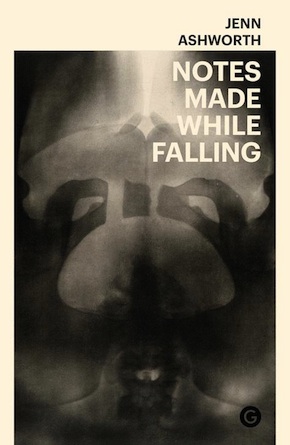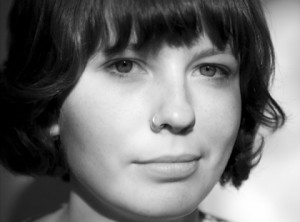Nowhere, or wherever you are
by Zoe Hannon
“An evocative and profound meditation on living, art and survival.” Sinéad Gleeson
I wanted to be a writer when I was little. There was no question of it; I knew loads of words, and it hadn’t crossed my mind that there was anything more to it than putting them together on a blank (or blank-ish) surface. I was a writer. I wasn’t prepared to wake up one day with no idea how to write – no real way to even say out loud without embarrassment that it was what I wanted to be doing. Words failed me. At university, depressed and desperate to get back (back, back) to writing creatively, I focused on the similarities between myself and Sylvia Plath, whom I had recently discovered. She and I were both depressed, of German heritage, considered full of potential from a young age. I thought I could tether myself to her and find a way to write well. To write and be well, though I couldn’t tell you why I expected to find the key to this magic combination in such an unlikely role model. And so I took a lot of baths, tried and failed to master the German language, drank Whisky Macs, toyed with tarot cards, kept an eye out for great big bastards to fall in love with. I secretly thought it was pertinent that I had been born exactly twenty years after Plath’s death, flying in the face not only of logic but fact – the actual date being skewed in my memory by almost a week. But I didn’t actually write anything, despite repeatedly copying down biographical quotes detailing Plath’s 1,000-words-a-day writing habit.
In Notes Made While Falling, Jenn Ashworth discusses the human tendency to find patterns in the world around us and its twisting (in this case as a symptom of PTSD) into apophenia, the madness of finding epiphany in the random. Ashworth and I are the same age and gender, both grew up in the northwest of England, both struggled with our mental health following a difficult childbirth, and are both (at the simultaneous/separate time implied by the acts of reading/writing) struggling to write fiction. These are real similarities, albeit cherry-picked from otherwise different lives. Still, I’m wary of mentioning them because they might trick people into thinking that this is a book written for mentally ill women, that it is a parenting guide, or that I believe ‘female’ is a literary genre and am OK with 50% of the population using these similarities to declare a book ‘not for them’. I should say, though this is by no means a book on motherhood; as someone who delivered a healthy child via appalling means and spent years bewildered and furious at having failed to successfully undertake the single act of creation for which I had not first been asked to study multiple examples of male genius – I have not read a more helpful line in any manual than this: “I have always been grateful for getting a healthy baby. But grateful was not the only thing I was.” It knocked the wind from me like my 4am reunion with Sylvia Plath, ‘cow-heavy’, dog-tired and at her most relatable in ‘Morning Song’, a few weeks after the birth of my first son. This idea of female relatability comes up often in Notes Made While Falling, in particular in the fourth chapter, ‘Ground Zero’. For anyone raised with one eye on their gender as a commodity and with a desire to gain access and approval by being unlike ‘other girls’, outing yourself as similar can feel unwelcome from all sides, but there’s a generosity and deliberate space to this book that allows time for moments of ‘me too!’ recognition and for a folding in of the reader’s experience. It feels collaborative in a way that only real art can. It is engaging and that engagement is hard, rewarding work.
Where the long form of a novel is unavailable, this book is a love note to the fragmentary – parts of memories, blacked-out segments of retrieved social-service notes, perfect two-word phrases.”
I was introduced to Ashworth’s work through her most recent novel, Fell. It is haunting and end-of-summer-y and has made its way into an internal grey-weather almanac of things to return to as the nights draw in, alongside sloughing off my summer skin in Joni Mitchell’s ‘River’ and views of my garden through casserole-steamed windows. Ashworth’s past/current inability to create fiction is left unresolved within this new text, though there are optimistic hints at a breakthrough. My favourite is a powerfully redemptive reworking of lying prone, of being ‘done-to’; from the cadaver-like figure of the author on a hospital table to a scene of lying still for a friend as a participant in a literal portrait of the artist. Where the long form of a novel is unavailable, this book is a love note to the fragmentary – parts of memories, blacked-out segments of retrieved social-service notes, perfect two-word phrases (a doctor’s remark on her ‘Apparent Competence’ despite debilitating insomnia, for example). I came away from this book the way I came home from the pub as a sixth-former, my pockets stuffed with scraps of ideas; torn-off beer mats with band names, book recommendations, things to look up. Warm-feeling and full. It’s another one for the almanac – it feels like a new school year and a kick up the arse, being this enthusiastic about reading things again.
Notes Made While Falling is a series of essays (it is more than this) and a memoir (it is this, more or less, since Ashworth’s memories are both missing and false in places) on the difficult necessity of creativity in the aftermath of trauma (again, it is more than this and I’m beginning to feel that typing these five words two hundred times would be more helpful than whatever it is I am trying to do here.)
Ashworth cuts through time and place, exploring the roots and fallout of earlier trauma and an ongoing battle to shape her bloody birth story into fiction. They are literal slashes within the text, by the way. I say ‘cuts’ because to ‘slash’ suggests something random and panicked – a violent thrashing – which action has its place within the story, but doesn’t represent their function here. They’re incisive. They reinforce distance even as they deepen the relationship between reader and writer. They create disarming lurches through time and space, which work especially well during passages on the author’s insomnia, mental breakdown and alcohol abuse. At one point towards the very end of the book, a slash is used to send the reassuring, present-tense presence of “the man I live with” (not just a phrase for ‘partner’ but a way to say “I am alive, with this person”) tumbling through time. I folded that page down to come back to, alongside forty or so others. What I like so much about this cut (and the book as a whole) is the refusal to placate with a ‘happy ending’: “I wanted to say that it still hurts and I don’t feel normal. I wanted to say that maybe mid-air could become a good place to write fiction from for people like us.” Or even a chronological ending given the permanent past/present/future tenses implied by the static page/current reader/continued existence of both reader and writer outside of the finished work. What is left following the cut is “I live”, which speaks to future possibilities as much as anything else. Regardless of the difficulty, what is delivered is what you get: not a novel but a lesson in how to write through a wound, rather than wait to be well. I am grateful for that.
 Jenn Ashworth is a Fellow of the Royal Society of Literature and author of the novels A Kind of Intimacy, Cold Light, The Friday Gospels, and Fell. She is Senior Lecturer in the Department of English Literature and Creative Writing at Lancaster University. Notes Made While Falling is published by Goldsmiths Press.
Jenn Ashworth is a Fellow of the Royal Society of Literature and author of the novels A Kind of Intimacy, Cold Light, The Friday Gospels, and Fell. She is Senior Lecturer in the Department of English Literature and Creative Writing at Lancaster University. Notes Made While Falling is published by Goldsmiths Press.
Read more
jennashworth.co.uk
@jennashworth
Author portrait © Martin Figura
Zoe Hannon lives with her family in the Midlands. She studied English and American Literature at the University of Warwick, still loves Whisky Macs, and is currently on her third attempt to become fluent in German. She’s working on that 1,000-a-day word count.

